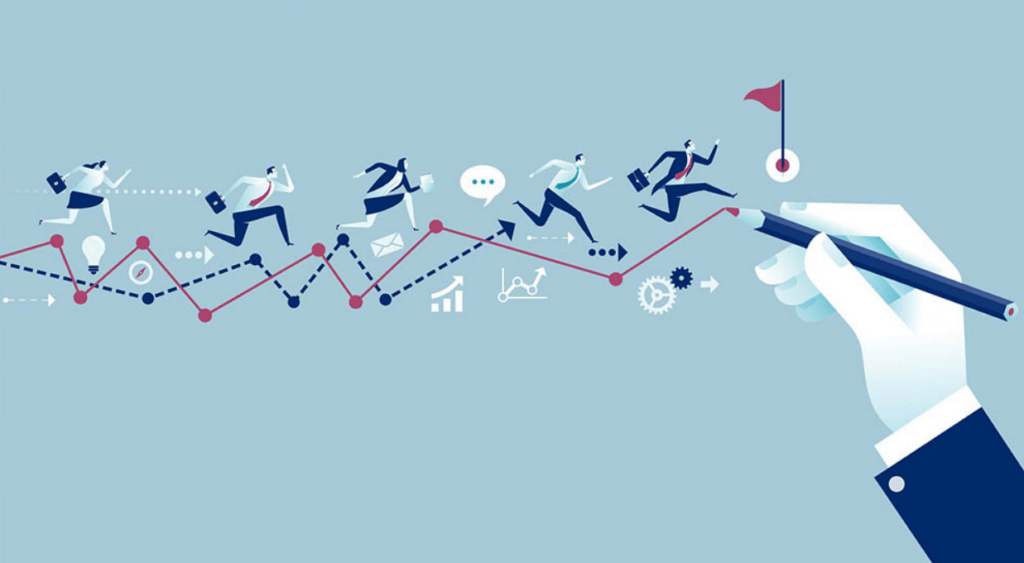
Apple’s iOS 16 update has been bad for advertising, which makes Facebook ad sellers sigh about their bad luck. However, it’s hard to give up Facebook and Instagram. advertising on social media. Today, retailers must adjust their advertising tactics and approaches to meet Facebook’s advertising restrictions and Instagram’s algorithm upgrades. They also must come up with new advertising concepts to fill in the data gap. More effort spent studying advertising, selecting audiences, and assessing data will make growing Facebook ads difficult. This article will show sellers ways to scale Facebook ad campaigns. This will help sellers grow their advertising businesses more quickly and accurately.
Method 1: Test new audiences that look like your old ones.
Facebook finds “lookalike audiences” by comparing them to a “seed audience.” For example, a seller can ask Facebook to make a lookalike audience from a CSV list of users. The seller can then test a wave of lookalike audiences using the following methods:
Facebook Ad Pixel function export
About 1% of your target audience is made up of lookalike audiences. 1% lookalike audiences are made up of people who are most similar to a seller’s seed audience. In theory, 1% of your audience is made up of the people Facebook thinks are most likely to buy.
Sellers can make different groups of people who look like them for different places. Based on user locations, it’s easy to create dozens of similar audiences, as demonstrated.
Customers with high unit prices from CRM
If there are many CRM or database users, sellers can generate lookalike audience lists based on specified user groups, export the CSV list, and include their customer lifetime value (LTV). Then, sellers can use this list as a starting point to find audiences that look like them. Facebook will use seed data from LTV users who spend the most as a priority when building lookalike audiences. If the seller has never sent a CSV list of customers to Facebook, it will look like this:
Method 2: Try out new users who are interested.
To reach new audiences, get users interested in new things. Sellers may leverage some interests to target specific client groups, and they may build on the basic premise to reach more people.
Method 3: Add 20% to the budget.
Increasing your ad expenditure by 20% every two to three days might enhance your conversion rate. As the ad group increases, it won’t need to learn a new learning phrase, stabilizing its performance. Your ad groups will stay longer and perform better if you slowly increase your budget. To run manually, go to ad management and change the ad group’s budget.

Raise the budget for the Facebook ad group in question.
Using Facebook’s automated rules, an ad group’s budget will automatically go up if certain things happen, like:
The aforementioned rule increases all ad groups’ budgets by 20% per week, with a maximum daily budget of $6,000 when the number of impressions is over 8,000, the cost per transaction is less than $10, and at least one purchase has been made in the last 3 days. The maximum daily budget and per-purchase cost should be lowered. “Once a week” is set as the number of times it will run. The background system on Facebook can only change automatically once a day or once a week.
Campaign budget optimization will automatically take care of budgets.
Facebook released Campaign Budget Optimization (CBO) at the end of 2018. They said it was a new way to manage the whole advertising budget. When CBO is turned on, sellers don’t have to set the budget for each ad group. Facebook will give the budget that was set during the campaign to the ad group that did the best. Enable CBO by creating a new campaign or activating the current one under campaign settings. You can see ads.
Method 4: Scale Facebook ads with automated rules
Most of the automation can be done by sellers using the automated rules tool on Facebook, but Revealbot will provide more accurate, timely, and efficient growth. Here’s a quick summary of the difference between the two:
With Revealbot, sellers have more power over time. Facebook only lets you do things every hour or every day, but Revealbot lets you do things every 15, 30, 1, or 2 hours. Ad groups are another difference. Facebook can only apply the rules to each campaign, ad group, or ad individually. But if sellers want to make different rules for different ad sets based on products, services, or audiences, Facebook is not yet able to do that. However, Revealbot can help sellers choose specific ad groups or make dynamic selections using filtering logic (for example, the ad set name contains ” keyword ” ). Overall, the automated rules of Revealbot can do a lot more than Facebook.
Method 5: Copy the ad group that did well.
Copying a successful ad group is not the same as making a new one step by step. You need to set a higher budget when copying ad groups. In theory, the more ad groups you have, the more sales you’ll get, but keep in mind that some people may be in more than one group. Once a seller sees that an ad group is doing well after 24 hours, they can do it again with a bigger budget. This is a manual process, but the seller can set up an automated rule to finish moving the action.
Method 6: Copy ads that didn’t work.
There are many reasons why an ad delivery doesn’t work, and sometimes it takes one or two tries to figure out what’s wrong. So it is very important to make copies of ads that don’t do well. The automated rules on Facebook can’t be used to copy either ad groups or individual ads. Here’s how to use the automated rules in Revealbot to copy ads that don’t do well.
Revealbot builds rules with AND/OR operators, and sellers can split these rules into 2 separate rules in Facebook’s algorithm. In this case, the rule would copy an ad that had more than 8,000 impressions, no purchases, a cost per link click of more than $5, or a relevance score of less than 7.
As you can see, one of the best ways to scale Facebook ads is to use automation tools and funnel strategies in a smart way. The idea behind the funnel strategy is to set high and low thresholds for key metrics and change other settings based on how well they work.
Method 7: Make sure at least one manual bid
If the seller uses manual bidding and sets the bid too low, the ad won’t be shown. The seller should try to raise the price if the manual bid is too low and the conversion rate and exposure have been low. Here’s how to set up auto-rules on Facebook:
This rule will raise the bid by 25% if an ad had less than 100 impressions the day before. The only problem with this rule is that you have to wait 24 hours to see how the bid affects exposure. This is because of how Facebook works. Every 2 hours, a test can be done with Revealbot. Revealbot can also automatically make the price go up. Once the rules are set, it’s almost always possible to get the lowest bid.
Method 8: Change the budget depending on how the business is doing.
If an ad group isn’t making money, the seller needs to cut the budget, just like a stop loss in stock trading. This is easy to do thanks to the tools that come with Facebook. In the following rule, the ad group’s daily budget should be cut by 25% if it spends more than $100 and only converts twice or less.
When you don’t have enough data to make a decision, you can replace upsell as a metric, depending on the campaign, how it’s used, how conversion metrics change, etc. If the ROAS data is good, on the other hand, you should increase the advertising budget by 25%. Under the two automated rules “spend > $100” and “purchase volume (Facebook Pixel) > 3,” the seller can be sure that the ROAS level is acceptable, and the price of the ad set will automatically go up.
If the cost per action (CPA) of an ad group is lower than the average CPA for its campaign, cut the budget for that ad group (or pause). Say, for instance, you have 3 ad groups in one campaign. Each ad group’s total CPA is $15, $20, or $35. This campaign’s average CPA would be $23.30. Sellers can set up a rule that stops ads if the CPA of an ad group is higher than the CPA of a campaign. This kind of benchmark is especially helpful for sellers who have a lot of ad sets and don’t know what CPA threshold to set.
